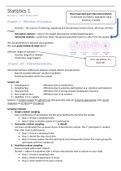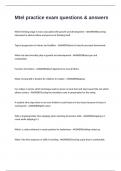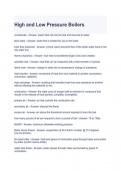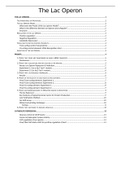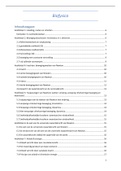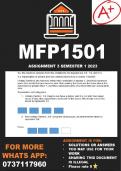Putin’s Russia:
Lecture: Tuesday 13-15
Seminar: Thursday, 11-13
Grading:
- 3 Reading Responses, to be submitted during the first four weeks -> 50% of grade.
- Annotated Bibliography -> 10% of grade
- Term Paper -> 40% of grade
—————————————————————
Week 1: What is the Russian Federation?
Soviet nationality policies under Lenin and Stalin
1920s: korenizatsiia (“enrooting”)
Terry Martin, “The Affirmative Action Empire”.
When the USSR fell apart, the outer borders of the USSR elapsed, but the borders between the individual
Union Republics largely remained the same: which means it fell apart, but the inner boundaries remained.
15 Republics of the Soviet Union suddenly became independent. The Soviet Union was cut in two territories:
some of these territories are called “Republics” while other territories are called “oblasts” (regions). Thus,
even in the USSR, Russia was not a unitary unit, but it fell into different territories which were named after
the minority groups living there.
Lenin and Stalin created homelands for the national republics, so that they could be integrated into the
Soviet Union and so that they would not become enemies of the Soviet state (-> affirmative action).
What is the Russian Federation?
85 federal subjects (sub-national units):
- 22 republics
- 46 oblast’s (regions)
- 9 krais (smaller regions)
- 3 federal cities (Moscow, St. Petersburg, Sevastopol [disputed])
- 4 autonomous okrugs (‘circles’)
- 1 autonomous oblast
,So: Russia is a mosaic of smaller and bigger units.
From Russia’s 85 federal subjects, 22 have the status of a republic:
North Caucasus:
(1) Adygeya, (9) Karachay-Cherkessia, (8) Kalmykia, (6) Ingushetia, (20) Chechnya, (5) Dagestan,
(7) Kabardino-Balkaria, (15) North Ossetia.
Volga-Urals:
(13) Mordovia, (21) Chuvashia, (12) Mari-El, (16) Tatarstan, (18) Udmutia, (3) Bashkortostan.
North: (10) Karelia, (11) Komi.
Asia: (2) Altai, (19) Khakassia, (17) Tuva, (4) Buriatiia, (14) Sakha/Yakutia.
NEW/disputed: (22) Crimea (excl. Sevastopol).
Political system:
President (elected) appoints Prime Minister, who forms a government, which is confirmed by the
State Duma (elected).
Federation Council (“Senate”) State Duma (lower house)
Two deputies from each of the 85 Blue: United Russia (341 seats)
Subnational units (“federal subjects”) of the Red: Communist Party (43)
Russian Federation, all “officially neutral”. Blue right: Liberal Democratic Party (40)
- One appointed by the governor Orange: A Just Russia (22)
- One selected by the regional parliament Rodina: 1
- Confirmed by President Civic Platform: 1
So: Democratic system! (although underlying corruption…)
Additional structure:
—> Security Council of the Russian Federation:
President Putin = chairman
Medvedev = deputy chairman
Nikolai Patrushev (secretary of Security Council) [was FSB director 1999-2018]
,In the Security Council real decisions are made: it is the “big boss” of Russia.
Other permanent members Security Council:
Mikhail Mishustin (prime minister)
Anton Vaino (manager of the Presidential Administration)
Valentina Matvienko (chairwomen Federation Council)
Viacheslav Voldoen (Chairman State Duma)
Sergei Shoigu (Minister of Defense)
Sergei Lavrov (Minister of Foreign Affairs)
Vladimir Kolokoltsev (Minister Internal Affairs)
Alexander Bortnikov (Director Federal Security Service)
Sergei Naryshkin (Director Foreign Intelligence Service)
Viktor Zolotov (Director National Guard)
Not permanent members:
Other ministers, military, prosecutor, mayors, and Presidential Envoys of the 8 federal districts.
So: you have the constitutional side (two chambers of the Parliament), but in the Security Council you have
the real powerful people.
Another leading structure:
State Council of the Russian Federation:
(since 2001 as consultative body of the President; since 2020 with enlarged authorities)
President (chairman)
Chairmen (speakers) of Senate and of Duma
Presidential Envoys of 8 Presidential Regions
Governors of the RF units
Chairmen of Duma factions
{{-> the State Council reaches out to the regions and the parties.}}
Presidential elections:
- Putin March 2000: 53%
- Putin March 2004: 71%
- Medvedev March 2008: 70,3%
- Putin March 2012: 63,6%
, - Putin March 2018: 76, 69%
“Party of Power”:
• Edinstvo (Unity), created by Yeltsin in Sept. 1999.
(Medved’ (‘Bear”: Mezhregonalnoe Dvizhenie “Edinstvo”; Interregional movement “Unity”).
Set up to contain Fatherland-All Russia (Primakov, Luzhkov, Iakovlev).
• Duma Elections 1999
- Unity 23,3%
- Communists 24,3%
- Fatherland-All Russia 13,3%
- Union of Right Forces 8,5%
- Zhirinovsky Liberal-democratic Party of Russia 6%
- Yabloko Liberals 5,93%
—> April 2001: the two merged into Edinaia Rossia (->United Russia)
2007 Duma elections:
United Russia 64,3%
Communists 11,7%
Zhirinovsky 8,1%
Just Russia 7,7%
…
Yabloko 1.59%
2011 Duma elections:
United Russia 52,9%
Communists 20,5%
Just Russia 14,2%
Zhirinovsky 12,45%
…
Yabloko 1,5%
September 2016 Duma elections:
United Russia 54.20 (plus 4.87) - 343 seats of 450
Communists 13.34 (down 5.85) - 42 seats
LDPR Zhirinovsky 13.16 (up 1.46)
Lecture: Tuesday 13-15
Seminar: Thursday, 11-13
Grading:
- 3 Reading Responses, to be submitted during the first four weeks -> 50% of grade.
- Annotated Bibliography -> 10% of grade
- Term Paper -> 40% of grade
—————————————————————
Week 1: What is the Russian Federation?
Soviet nationality policies under Lenin and Stalin
1920s: korenizatsiia (“enrooting”)
Terry Martin, “The Affirmative Action Empire”.
When the USSR fell apart, the outer borders of the USSR elapsed, but the borders between the individual
Union Republics largely remained the same: which means it fell apart, but the inner boundaries remained.
15 Republics of the Soviet Union suddenly became independent. The Soviet Union was cut in two territories:
some of these territories are called “Republics” while other territories are called “oblasts” (regions). Thus,
even in the USSR, Russia was not a unitary unit, but it fell into different territories which were named after
the minority groups living there.
Lenin and Stalin created homelands for the national republics, so that they could be integrated into the
Soviet Union and so that they would not become enemies of the Soviet state (-> affirmative action).
What is the Russian Federation?
85 federal subjects (sub-national units):
- 22 republics
- 46 oblast’s (regions)
- 9 krais (smaller regions)
- 3 federal cities (Moscow, St. Petersburg, Sevastopol [disputed])
- 4 autonomous okrugs (‘circles’)
- 1 autonomous oblast
,So: Russia is a mosaic of smaller and bigger units.
From Russia’s 85 federal subjects, 22 have the status of a republic:
North Caucasus:
(1) Adygeya, (9) Karachay-Cherkessia, (8) Kalmykia, (6) Ingushetia, (20) Chechnya, (5) Dagestan,
(7) Kabardino-Balkaria, (15) North Ossetia.
Volga-Urals:
(13) Mordovia, (21) Chuvashia, (12) Mari-El, (16) Tatarstan, (18) Udmutia, (3) Bashkortostan.
North: (10) Karelia, (11) Komi.
Asia: (2) Altai, (19) Khakassia, (17) Tuva, (4) Buriatiia, (14) Sakha/Yakutia.
NEW/disputed: (22) Crimea (excl. Sevastopol).
Political system:
President (elected) appoints Prime Minister, who forms a government, which is confirmed by the
State Duma (elected).
Federation Council (“Senate”) State Duma (lower house)
Two deputies from each of the 85 Blue: United Russia (341 seats)
Subnational units (“federal subjects”) of the Red: Communist Party (43)
Russian Federation, all “officially neutral”. Blue right: Liberal Democratic Party (40)
- One appointed by the governor Orange: A Just Russia (22)
- One selected by the regional parliament Rodina: 1
- Confirmed by President Civic Platform: 1
So: Democratic system! (although underlying corruption…)
Additional structure:
—> Security Council of the Russian Federation:
President Putin = chairman
Medvedev = deputy chairman
Nikolai Patrushev (secretary of Security Council) [was FSB director 1999-2018]
,In the Security Council real decisions are made: it is the “big boss” of Russia.
Other permanent members Security Council:
Mikhail Mishustin (prime minister)
Anton Vaino (manager of the Presidential Administration)
Valentina Matvienko (chairwomen Federation Council)
Viacheslav Voldoen (Chairman State Duma)
Sergei Shoigu (Minister of Defense)
Sergei Lavrov (Minister of Foreign Affairs)
Vladimir Kolokoltsev (Minister Internal Affairs)
Alexander Bortnikov (Director Federal Security Service)
Sergei Naryshkin (Director Foreign Intelligence Service)
Viktor Zolotov (Director National Guard)
Not permanent members:
Other ministers, military, prosecutor, mayors, and Presidential Envoys of the 8 federal districts.
So: you have the constitutional side (two chambers of the Parliament), but in the Security Council you have
the real powerful people.
Another leading structure:
State Council of the Russian Federation:
(since 2001 as consultative body of the President; since 2020 with enlarged authorities)
President (chairman)
Chairmen (speakers) of Senate and of Duma
Presidential Envoys of 8 Presidential Regions
Governors of the RF units
Chairmen of Duma factions
{{-> the State Council reaches out to the regions and the parties.}}
Presidential elections:
- Putin March 2000: 53%
- Putin March 2004: 71%
- Medvedev March 2008: 70,3%
- Putin March 2012: 63,6%
, - Putin March 2018: 76, 69%
“Party of Power”:
• Edinstvo (Unity), created by Yeltsin in Sept. 1999.
(Medved’ (‘Bear”: Mezhregonalnoe Dvizhenie “Edinstvo”; Interregional movement “Unity”).
Set up to contain Fatherland-All Russia (Primakov, Luzhkov, Iakovlev).
• Duma Elections 1999
- Unity 23,3%
- Communists 24,3%
- Fatherland-All Russia 13,3%
- Union of Right Forces 8,5%
- Zhirinovsky Liberal-democratic Party of Russia 6%
- Yabloko Liberals 5,93%
—> April 2001: the two merged into Edinaia Rossia (->United Russia)
2007 Duma elections:
United Russia 64,3%
Communists 11,7%
Zhirinovsky 8,1%
Just Russia 7,7%
…
Yabloko 1.59%
2011 Duma elections:
United Russia 52,9%
Communists 20,5%
Just Russia 14,2%
Zhirinovsky 12,45%
…
Yabloko 1,5%
September 2016 Duma elections:
United Russia 54.20 (plus 4.87) - 343 seats of 450
Communists 13.34 (down 5.85) - 42 seats
LDPR Zhirinovsky 13.16 (up 1.46)


